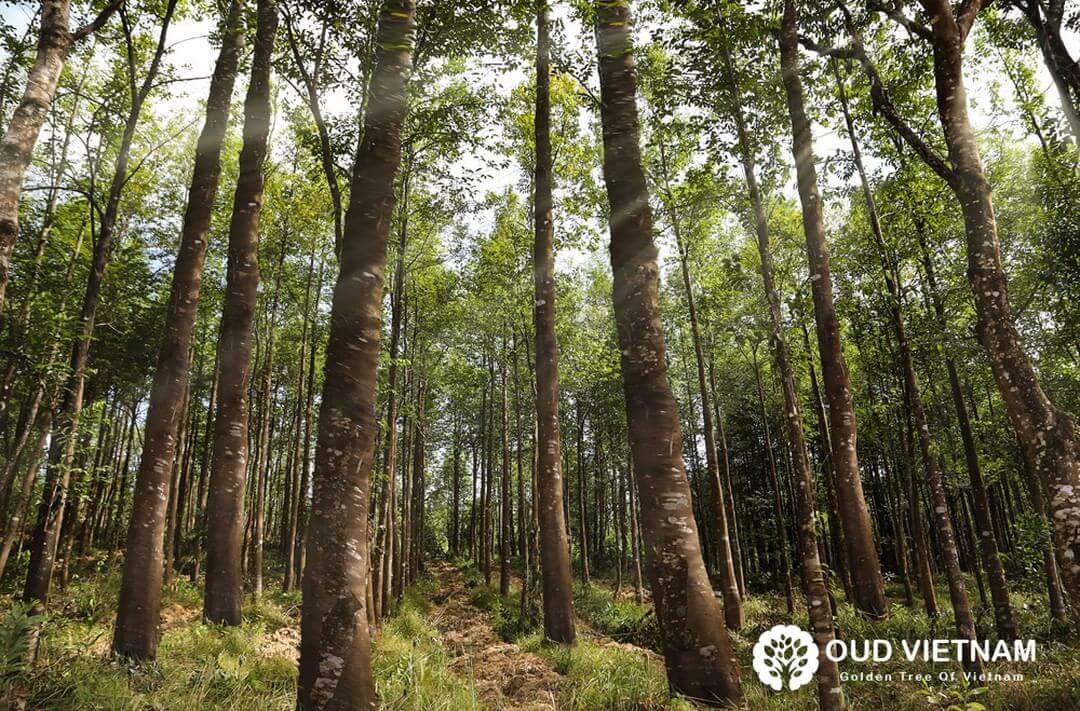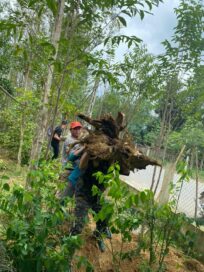- You have no items in your shopping cart
- Subtotal: $0.00
The cultivation of Aquilaria Crassna, also known as Agarwood or Oud, is a meticulous process that yields valuable products. This unique tree has gained fame for its distinct fragrance and economic significance. In this article, we’ll delve into the essential aspects of growing Aquilaria Crassna for Oud production.
1. Botanical Characteristics
Aquilaria Crassna Pierre ex Lecomte, commonly referred to as Agarwood tree, hair tree, is 30-40m tall, with gray, fibrous bark. Its slender, elongated leaves are glossy green on the upper side and light green with fine hairs on the underside. The plant bears small white flowers in clusters, and its fruit dries to split into two parts, each containing 1-2 black seeds. Aquilaria Crassna is renowned for its ability to produce black resin with a fragrant aroma.
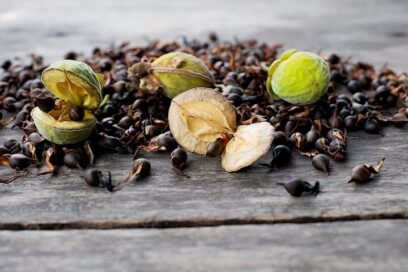
2. Growing Conditions
To cultivate Agarwood successfully, specific climate and soil conditions are crucial. Ideal requirements include an average annual temperature of 20-25°C, annual rainfall exceeding 1500mm, and humidity levels above 80%. The soil should be well-drained, loamy, with a minimum depth of 40cm and abundant organic matter. Avoid planting on limestone, sandy, hot, or waterlogged soils.
3. Seed Selection
Selecting high-quality seeds is vital for successful cultivation. It is preferable to use seeds from mature Aquilaria crassna, ideally those over 10 years old. At Oud Vietnam, we prioritize seeds from trees aged 20 years or older for their genetic purity.
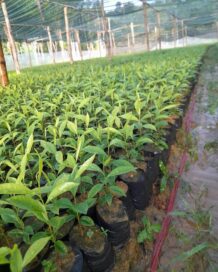
4. Seedling Production Techniques
Producing healthy seedlings is a critical step in the cultivation process. Choose seeds that are shiny and black, with a high germination rate (>80%). Older seeds are preferred, as they tend to produce superior seedlings. Sow the seeds in a prepared mixture of lightly mechanized soil with a pH of 5-6. Provide adequate shading and adjust light conditions as necessary. After 30-35 days, transplant the seedlings into special trays filled with a coconut fiber and peat mixture, sized at 12×16 cm. These trays should be placed in a shaded nursery area to protect the young plants from direct sunlight and heavy rainfall. During the initial 30-45 days post-transplanting, maintain consistent watering to keep the soil moist, with twice-daily watering totaling 2-4 liters per square meter. Gradually reduce the watering frequency after the seedlings establish themselves in the nursery. After 45 days until the plants leave the garden, the amount of watering is gradually reduced every 3-5 days. Plants in the nursery need to pay attention to turning the pots when they take root from the pots, usually once a month. At this stage, fertilize in the cool afternoon. After fertilizing, water immediately to wash the plants and leaves. DAP fertilizer with a concentration of 1-1.5% at 2 liters/m2, only water plants 2 months old or older, every 15 days.
Pest and Disease Management
Common issues include root rot, worms, powdery mildew, and leaf scorch. Appropriate chemical treatments, such as Brocdeau, Basudin, or Baylidin, should be used as instructed on the product packaging. Insect pests that feed on the leaves and bore into the stems can be controlled with contact or systemic pesticides. Healthy seedlings for planting should exhibit upright growth, with a height exceeding 50 cm, root collar diameter greater than 0.4 cm, and undamaged root balls.
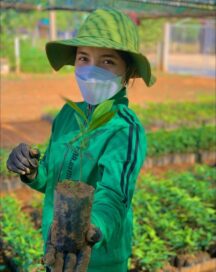
5. Planting Techniques
Pay attention to irrigation and avoid water logging conditions for optimal growth.
– Dig a planting hole: size them to 40x40x30 cm, allowing the topsoil to be set aside. Dig the holes one month before planting, then fill the hole with a layer of topsoil mixed with fertilizer first. The amount of NPK fertilizer is 0.3-0.5 kg per hole, and should be mixed with 1kg per hole of organic fertilizer.
– Planting density: Vary depending on the soil type, the following densities can be chosen: 625 plants per hectare with a distance of 4×4 m; 800 trees per hectare with a distance 2.5×5 m and 1160 trees per hectare with a distance 3×3 m. If intercropping in coffee, cashew, longan, pepper gardens… the density is from 250 to 500 trees.
– Planting technique: Planting should occur after the first rains of the season, during light, cool, and humid weather. Planting on days with little rain, cool and moist weather is good. Arrange the seedlings in a triangular pattern to prevent soil erosion. Place the seedlings slightly deeper than their natural soil level, typically 1-2 cm. After planting, clear weeds around the base and gently mound soil around the seedlings, leaving the root collar 2-3 cm above the ground. Fertilize twice in the first year and once in the second year, applying 100g of NPK fertilizer per plant. In subsequent years, focus on weed control, soil cultivation, and shaping the trees without inorganic fertilizer, maintaining adequate soil moisture with organic matter.
6. Care and Protection
Regular care and protection are essential for the successful development of Agarwood trees. Cultivating Aquilaria Crassna for Agarwood production is a long-term commitment, and by providing attentive care and protection to the trees, which increase the likelihood of a successful harvest of these valuable products.
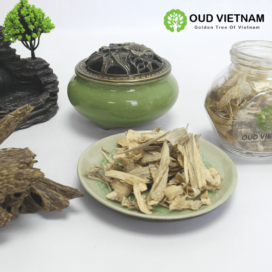
Growing Aquilaria Crassna requires attention to detail and adherence to specific conditions, but the rewards in the form of Agarwood resin make it a valuable endeavor. With the right knowledge and dedication, you can successfully cultivate this precious tree. It is our hope at Oud Vietnam that this article serves as a valuable reference for those interested in cultivating Agarwood. Oud Vietnam wish you every success in your Agarwood cultivation endeavors!
OUD VIETNAM CO., LTD.
Main office & Factory:
Phuc Trach village, Huong Khe District, Ha Tinh Province, Vietnam.
Trading office:
Address 1: 128 Hang Trong, Hoan Kiem, Ha Noi, Vietnam
Hotline: (+84)987296001 (available on Whatsapp & Viber)
Address 2: Al Garhoud Road, Deira City Centre Area, Dubai, United Arab Emirates
Hotline: (+971)565677415 (available on Whatsapp & Botim)
Email: oudvietnam.no1@gmail.com
Instagram :oud_vietnam


